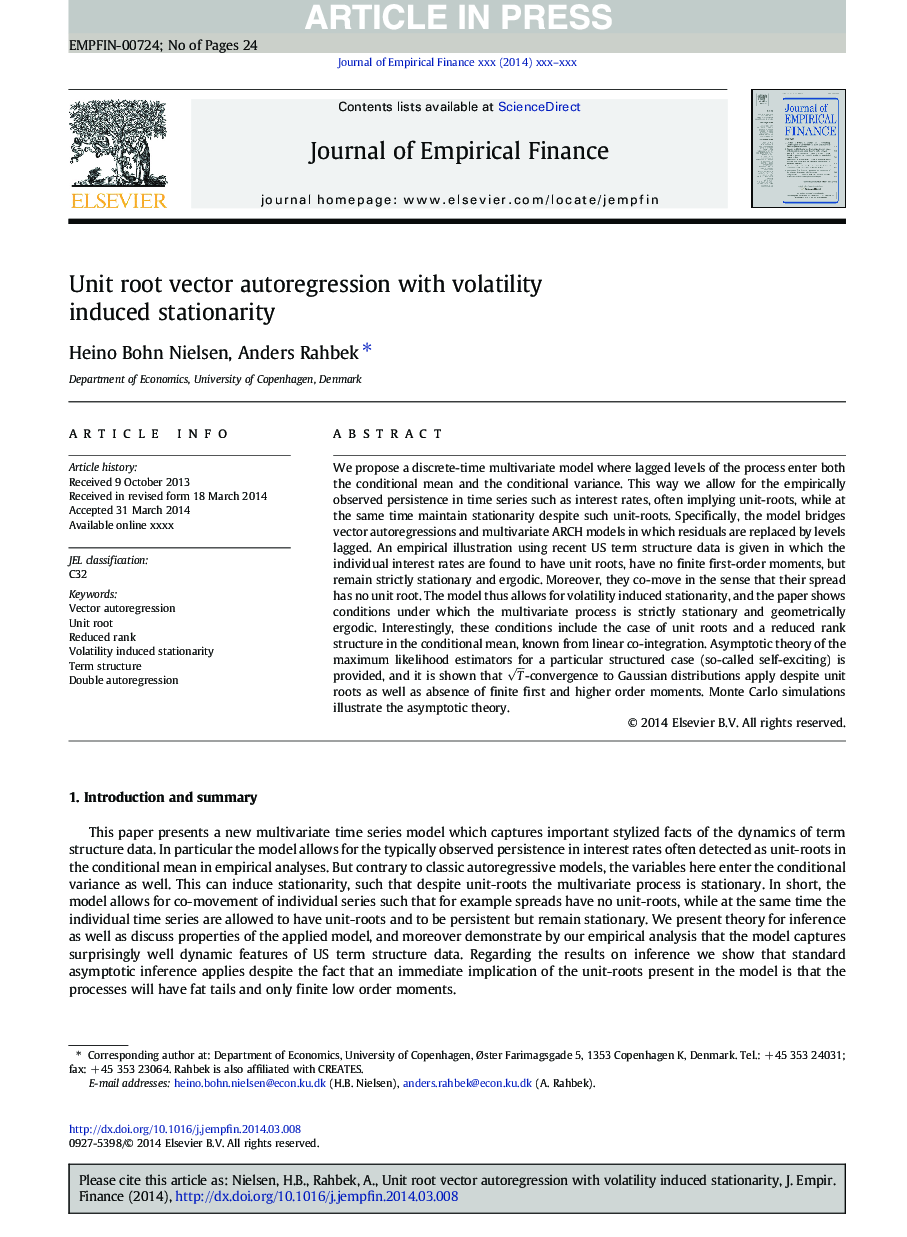| Article ID | Journal | Published Year | Pages | File Type |
|---|---|---|---|---|
| 7360932 | Journal of Empirical Finance | 2014 | 24 Pages |
Abstract
We propose a discrete-time multivariate model where lagged levels of the process enter both the conditional mean and the conditional variance. This way we allow for the empirically observed persistence in time series such as interest rates, often implying unit-roots, while at the same time maintain stationarity despite such unit-roots. Specifically, the model bridges vector autoregressions and multivariate ARCH models in which residuals are replaced by levels lagged. An empirical illustration using recent US term structure data is given in which the individual interest rates are found to have unit roots, have no finite first-order moments, but remain strictly stationary and ergodic. Moreover, they co-move in the sense that their spread has no unit root. The model thus allows for volatility induced stationarity, and the paper shows conditions under which the multivariate process is strictly stationary and geometrically ergodic. Interestingly, these conditions include the case of unit roots and a reduced rank structure in the conditional mean, known from linear co-integration. Asymptotic theory of the maximum likelihood estimators for a particular structured case (so-called self-exciting) is provided, and it is shown that T-convergence to Gaussian distributions apply despite unit roots as well as absence of finite first and higher order moments. Monte Carlo simulations illustrate the asymptotic theory.
Related Topics
Social Sciences and Humanities
Economics, Econometrics and Finance
Economics and Econometrics
Authors
Heino Bohn Nielsen, Anders Rahbek,
